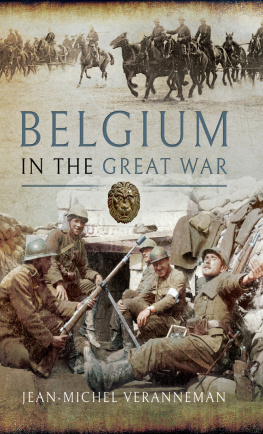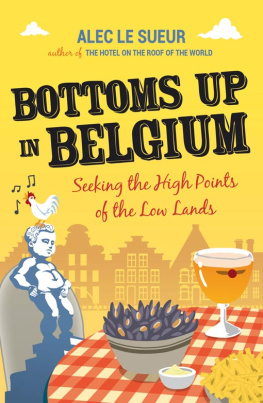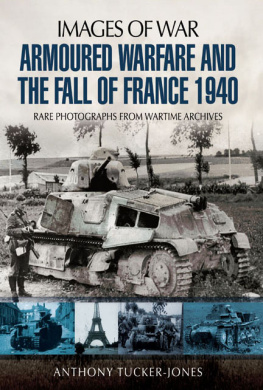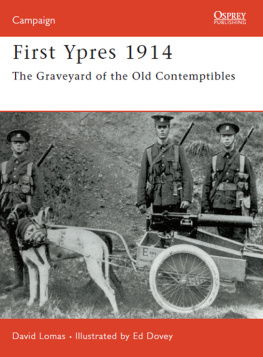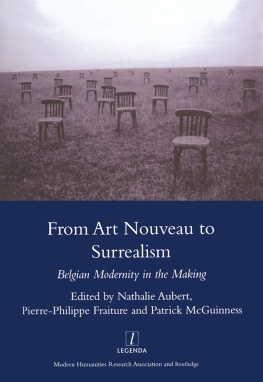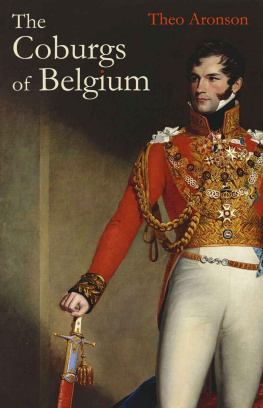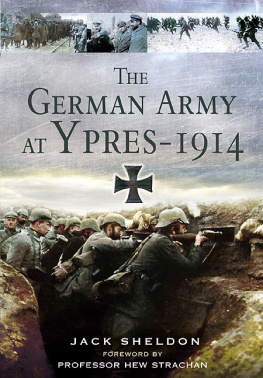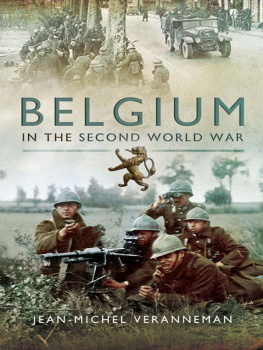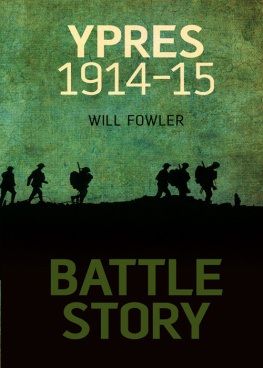Pagebreaks of the print version

Belgium in the Great War
By the same author
Belgium in the Second World War
Belgium in the Great War
Jean-Michel Veranneman
First published in Great Britain in 2018 by
Pen & Sword Military
An imprint of
Pen & Sword Books Ltd
Yorkshire Philadelphia
Copyright Jean-Michel Veranneman 2018
ISBN 978 1 52671 660 6
eISBN 978 1 52671 662 0
Mobi ISBN 978 1 52671 661 3
The right of Jean-Michel Veranneman to be identified as Author of this work has been asserted by him in accordance with the Copyright, Designs and Patents Act 1988.
A CIP catalogue record for this book is available from the British Library.
All rights reserved. No part of this book may be reproduced or transmitted in any form or by any means, electronic or mechanical including photocopying, recording or by any information storage and retrieval system, without permission from the Publisher in writing.
Pen & Sword Books Limited incorporates the imprints of Atlas, Archaeology, Aviation, Discovery, Family History, Fiction, History, Maritime, Military, Military Classics, Politics, Select, Transport, True Crime, Air World, Frontline Publishing, Leo Cooper, Remember When, Seaforth Publishing, The Praetorian Press, Wharncliffe Local History, Wharncliffe Transport, Wharncliffe True Crime and White Owl.
For a complete list of Pen & Sword titles please contact
PEN & SWORD BOOKS LIMITED
47 Church Street, Barnsley, South Yorkshire, S70 2AS, England
E-mail:
Website: www.pen-and-sword.co.uk
Or
PEN AND SWORD BOOKS
1950 Lawrence Rd, Havertown, PA 19083, USA
E-mail:
Website: www.penandswordbooks.com
List of Maps
The campaign of 1914
The Battle of the Yser
The East African campaign
The final offensive, 1918
Annexations
League of Nations mandates
List of Plates
Leopold of Saxe-Coburg-Gotha, first King of the Belgians.
Leopold II, second King of the Belgians.
Brave Little Belgium: the sketch in Punch that helped to sway British opinion.
Lancer Fonck, the first Belgian casualty of the Great War.
Belgian soldiers in their 1914 uniform, with dogs of the now extinct Belgian mastiff breed.
The strategic Vis bridge over the Meuse River, which was blown up by the Belgian army before the Germans arrived.
The historic centre of Louvain (Leuven), completely devastated by the Germans.
Plan of Fort de Loncin, typical of a Brialmont-type fort.
General Leman, in his Napoleonic-style uniform.
The mammoth 420 mm German naval Krupp gun, adapted to demolish the Belgian forts from a safe distance.
One of the gun turrets of the Brialmont forts pre-war.
Effects of the 420 mm shells on one of Loncins turrets.
Haelen: Belgian Lancers hold a barricade against an attack by Mecklenburg Dragoons.
Haelen: the German cavalry charges.
King Albert of the Belgians holds a medal parade.
Two of the beautiful German helmets that are to be seen in large number at the Haelen Museum.
Haelen: the monument the Germans erected close to Yzerwinning Farm.
The Gooses foot at Nieuport.
Contemporary drawing of hand-to-hand fighting during the Battle of the Yser.
Aerial view of the Gooses foot in Nieuport, where the drainage canals converge that were used to flood the German bank of the Yser River.
The Kaiserliche (Imperial) Marinekorps was responsible for defending the coast, from the front to the Dutch border.
The Kaiser visits his troops at the front in Flanders.
Stabilization. Endless watching over the desolate, inundated front.
The Trench of Death on the bank of the Yser River has been preserved.
Madam Tack and her donkey Paula would bring sweets to the soldiers.
Albert I, King of the Belgians, in the new khaki uniform introduced in 1915.
Bavarian-born Queen Elisabeth; her loyalty to her husbands country never wavered.
The Sainte Adresse government in exile in France.
Belgian Henri Farman 20, early in the war.
Famous balloon buster Andr de Meulemeester, with his Hanriot Dupont biplane.
Spad XI two-seater, of the type King Albert sometimes flew across the lines.
The Belgian Congolese Force Publique during the campaign in German East Africa.
The auto-cannons and their colourful CO.
The auto-cannons.
Cardinal Mercier.
Brussels Burgomaster Adolphe Max.
Gabrielle Petit, who was executed as a spy by the Germans.
The Tir national shooting range in Brussels, where many executions took place.
The Belgian army at the battle of Merksem.
Before evacuating Belgium, the Germans systematically plundered and destroyed.
The final offensive.
Portrait of King Albert that hangs at the entrance of the Belgian ambassadors residence in London.
Belgian troops occupying Aachen, Germany.
The large cemetery at Poelkapelle where 1,722 Belgian soldiers are buried.
The Ijzertoren (Yser tower) monument in Dixmude.
The monument to the dead at Warsage village, where the Germans executed a number of civilians in August 1914.
Stocks of shells found in the fields by farmers and waiting to be destroyed.
In peace sons bury their fathers.
In war fathers bury their sons.
Thucydides, Greek historian, c . 460400 BC
Words of Thanks
T he author would like to mention several historians who have inspired him. Of course, Henri Pirenne is the premier Belgian historian and lived through the whole of the Great War, indeed suffering exile in Germany, writing extensively about it and other subjects after the war. One of the best contemporary Belgian historians was Jean Stengers of Brussels University (ULB). The author had the privilege to be taught by him, as he was also by Professors John Bartier and Jacques Willequet. He was fortunate to be able to discuss the period and particular episodes with Professor Francis Balace of Lige University, Professor Etienne Rooms, Dr Chantal Kesteloot of the Centre dEtudes de la Seconde Guerre Mondiale (CEGES) in Brussels and Professor Van Goethem of the Dossin Barracks Memorial and Antwerp University. Historian Professor John Rogister FSA, FRHistS, kindly read the work. My daughter-in-law Ana Carolina Lopes Ferreira da Silva drew the maps, while Pierre Lierneux of the Brussels Royal Army Museum (now the War Heritage Institute) and Daniel Brackx, who has an extraordinary collection of aviation pictures, helped me with plates representing planes. Last but not least, Lieutenant Dobbelaere of the Poelcapelle Unexploded Ordnance Disposal unit (SEDEE/DOVO) of the Belgian army gave us an extremely interesting tour of the facilities there.
To them and to many others who ceaselessly encouraged him the author would like to express his sincere gratitude, with special thanks to his patient wife Maria, who accompanied him to wrecked forts and former battlefields.
Authors Note
At the publishers prompting, the author has not interrupted the text with notes. They are cued by superscript number in the text and grouped together at the end of the main text. They usually refer to points that are of minor importance or are not directly part of the history of Belgium during the First World War, but may be of interest to the reader. Others are bibliographic references of sources used.
Note on place names

